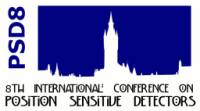Speaker
Prof.
Alan Owens
Description
As space missions have evolved, the scientific programs they carry out are becoming increasingly multi-disciplinarian and multi-waveband. This in turn, requires a broader range of measurements to be performed and therefore more instruments to be flown. Whereas, thirty years ago the average planetary mission carried, say, 4 prime instruments, it may now carry 10 or 12. However, a commensurate increase in spacecraft mass, power or funding has not been forthcoming. As a consequence, instruments are becoming increasingly resource limited and thus a new approach to payload design and construction is required. Several strategies are being pursued by the Advanced Concepts and Technology Preparation Division of ESA. These include, the so-called HIPS (Highly Integrated Payload Suite) concept [1], miniaturization, the use of advanced technologies and smart or targeted materials [2]. HIPS achieves mass savings by sharing resources, functions and real estate amongst the instruments and spacecraft. Miniaturization achieves resource optimization through mass and power reduction, which for X and gamma-ray detectors is difficult to realize without a similar reduction in sensitivity. The third and forth strategies are potentially the most rewarding, especially when applied to X- and gamma-ray detection systems since present day systems are almost exclusively designed around conventional technologies which require ancillary support in terms of cooling systems, high voltage supplies, radiation shielding and complex readout sensors, etc. These in turn load spacecraft resources, increase complexity and reduce reliability. Clearly what is needed are sensors that fulfill the detection requirements but do not require additional services and this is where advanced technologies and particularly targeted materials come into play. In this paper, we describe a range of detector developments at ESA which concentrate on new materials and techniques in an effort to reduce spacecraft resources without compromising performance.
Keywords: X-ray detectors, Gamma-ray detectors, semiconductors, scintillators
[1] S. Kraft, M. Collon, J. Montella, E.J. Buis, M. Beijersbergen, J. Harris, C. Erd, P. Falkner, R. Schulz, A. Peacock, On the Concept of the Highly Integrated Payload Suite for use in future planetary Missions: the Example of the BepiColombo Mercury Planetary Orbiter”, Proc. of the Fifth IAA International Conference on Low-Cost Planetary Missions, ed. R.A. Harris, ESA SP-542, (2003) pp 219-226.
[2] D.H. Lumb, A. Owens, M. Bavdaz, T. Peacock, “Development of Compound Semiconductor Detectors at ESA”, Nucl. Instr. and Meth., A568 (2006) pp. 427-432.
Author
Prof.
Alan Owens

